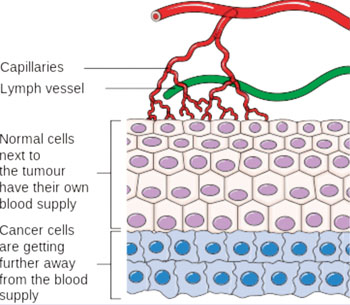Findings Explain How Tumors Guide New Blood Vessel Formation
By LabMedica International staff writers
Posted on 16 Jul 2015
Tumors must generate new blood vessels in order to grow, and a recent paper described a novel Rho-family GTPase activation cascade that was required for the generation of the endothelial cell filopodial protrusions that are necessary for the tubule remodeling that forms the lumen through which the blood will flow.Posted on 16 Jul 2015
During the process of new blood vessel formation or angiogenesis, enzymes known as Rho-GTPases influence endothelial cell migration and cell-to-cell adhesion. However, it is not known whether they control formation of vessel lumens, which are essential for blood flow. To clarify this point, investigators at the University of Leeds (United Kingdom) worked with mouse models that allowed them to manipulate levels of enzyme expression during VEGF (vascular endothelial growth factor)-dependent angiogenesis.

Image: Without angiogenesis a tumor cannot grow beyond a limited size (Photo courtesy of Cancer Research UK/Wikimedia Commons).
They reported in the July 1, 2015, online edition of the journal Nature Communications that lumen formation required early cytoskeletal remodeling and lateral cell–cell contacts, mediated through the RAC1 guanine nucleotide exchange factor (GEF) DOCK4 (dedicator of cytokinesis 4). DOCK family proteins contribute to cell signaling by activating G proteins of the Rho family, such as Rac and Cdc42. Dock4 dependent Rac activation regulates reorganization of the cytoskeleton and was known to lead to the formation of membrane protrusions, which are a crucial step in neuronal development and cell migration.
The investigators showed for the first time that DOCK4 signaling was necessary in angiogenesis for lateral filopodial protrusions and tubule remodeling prior to lumen formation, whereas proximal, tip filopodia persisted in the absence of DOCK4.
Senior author Dr. George Mavria, professor of medicine at the University of Leeds, said, “The finding gives an important indicator of how the protein affects the growth of secondary breast tumors in the brain. The discovery could also enable experts to predict which patients might be at risk of their breast cancer spreading, and develop drugs to prevent the growth of secondary tumors. We want to understand how these tumors form and grow, but we still need to do more research to stop these tumors growing altogether.”
Related Links:
University of Leeds













